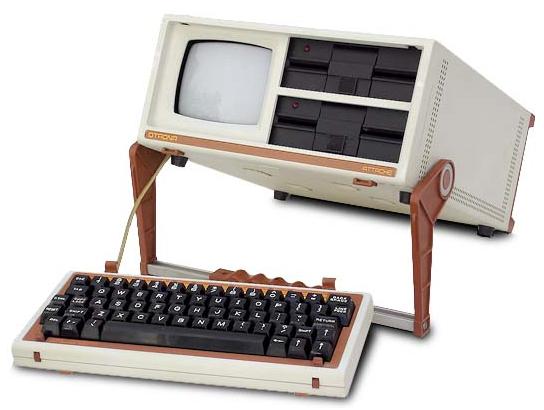
Computers. You’d think that they’d be able to do something incredibly useful by this day and age. But get rid of all those amazing graphics in LA Noir, the hard drive for you to lose your photos in and a connection to the internet; and all you have is a calculator with aspirations. Fact.
To be fair they are very good at dressing things up to make them look impressive. DAWs give producers a wealth of sonic potential that was all pretty much impossible in the days of analogue. They can put vocals in tune, drums in time and make a midi keyboard sound like a Minimoog.
But no matter how much we wish it wasn’t the case, computers are completely awful at generating content. Where is the ‘compose Platinum selling album’ key command in Logic? Where’s the ‘improve my bassline’ menu command in Cubase? Where’s the ‘choose correct tempo’ option in Ableton Live? They don’t exist, and they probably won’t ever exist because these are artistic choices that depend on human input and creative decisions that only humans can make. The context, the feeling and the purpose behind a piece of art can only come from us, not from computers.
You might be thinking ‘this is ridiculous, I rely on Ableton all the time. Without it I’d be lost, it’s essential to my creative output’. Well, sorry, you’re wrong. Your relationship with your DAW has been holding you back for years. How come? Here’s the typical working process for a DAW user:
1. Turn on computer // 2. Make cup of tea while Windows loads // 3. Start DAW // 4. Fiddle around assembling beats from loops and sounds // 5. Fiddle around with plugins to phatten up the sound // 6. Keep fiddling // 7. Throw in a bassline that sounds identical to the one you really like from that song you love // 8. Throw out that bassline because it’s not yours, then try to write one of your own // 9. Fail // 10. Give up frustrated and bored after about an hour // 11. Play LA Noir…
Ring any bells? By using a DAW to help you write you commit the cardinal sin of expecting the computer to inspire you. By scouring through banks of presets, drum loops, plugins, you’re asking the computer to supply you with the excitement you don’t have, but desperately need to write a hit. Sometimes that way of working can get results, but it usually does not.
Still unconvinced? Let’s say you have found a sound you really like. So what? You’re no closer to writing a great tune because you still have all of the creative work to do. So you work with your sound for about 20 minutes. Except it’s not your sound is it? It’s someone else’s, and quickly your enthusiasm dwindles because you’re trying to make a context for something that the computer made to excite you that’s impressive but meaningless. You start to look for another sound, all the time trying to recapture that original moment of jubilant inspiration. Fail.
We need to re-adjust our relationship with our software. DAWs are superb at arranging audio, creating new synthesized sounds and assembling beats but they’re terrible, just terrible for writing music. Using a DAW to write music is like a film director writing a screenplay using Final Cut Pro X, it makes no sense. You can arrange video clips and make things look fantastic, but someone has to make the content first, otherwise you’re simply editing…nothing. Likewise, your DAW is superb at arranging musical ideas, but you need to have an idea first of all. Without it, you’re simply playing with your computer.
So what should we do? Here’s a new kind of workflow that actually does work…
 1. Do nothing until inspiration strikes. Don’t just sit and toy around with your DAW hoping for inspiration to slap you around the chops. By all means play with your computer, spend as much time as you can having fun with it, experimenting and looking for cool things to do. You’ll learn loads about how things work and have fun too; just don’t attempt to make a tune this way.
1. Do nothing until inspiration strikes. Don’t just sit and toy around with your DAW hoping for inspiration to slap you around the chops. By all means play with your computer, spend as much time as you can having fun with it, experimenting and looking for cool things to do. You’ll learn loads about how things work and have fun too; just don’t attempt to make a tune this way.

2. When does inspiration strike, run with it. It’s tempting to start assembling beats the moment you get an idea, but don’t switch on the laptop. Instead, write down what it is that you’re excited about (there is absolutely no substitue for a pad paper and a pen in your musical work space). If it is a bassline, sing or hum it into your mobile phone so you have a recording of your fabulous idea. If it’s a lyrical idea then you should write down as much as you can. Lyrics depend on inspiration and if you don’t have it, don’t write them. On the other hand, when you find the inspiration, run with it!

3. Give your idea a title. Creativity depends on limitations, and right now you don’t have any because this tune only exists in your imagination. Give your idea a title; it will bring a focus to your work.

4. Now that you have your idea and a title, map it out. Ask yourself some questions: what will my tune sound like? What is its tempo? What genre? What it mood? Which timbres am I going to use to get the musical effect that I want? Spend as much time as you can on this, because how you map out your track will effect everything that occurs thereafter. Again, write down your ideas. Imagine your piece is like a journey down a freeway; what’s the scenery like? How fast are you driving? Who are you with? And most importantly…where are you going?
Now switch on your computer. You have a clear, consistent vision of what you want to achieve. You have a plan and a clear objective. Congratulations! And if you’re still struggling to get your ideas together, this great vid gives you another 29 ideas to help you stay creative. Tip 4 is ‘get away from your computer’, naturally.
Steve Hillier teaches Business at London’s Point Blank Music School and Music Production classes Online. Keep up to date with all of Point Blank’s news, tutorials and free giveaways by subscribing to their Youtube channel, and following them on Facebook and Twitter. Please leave a comment below.